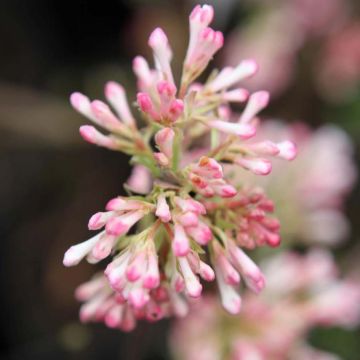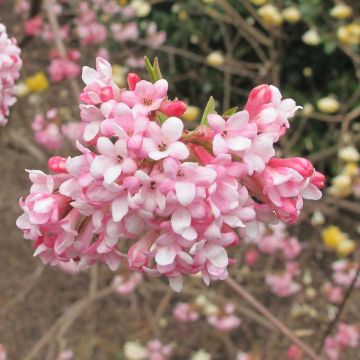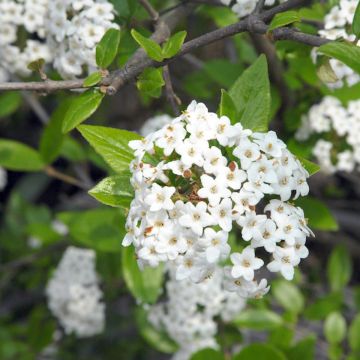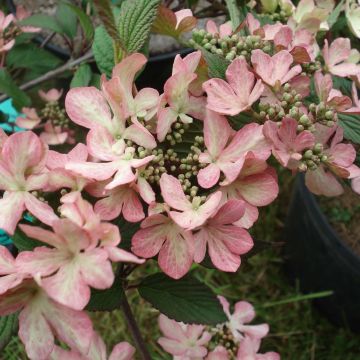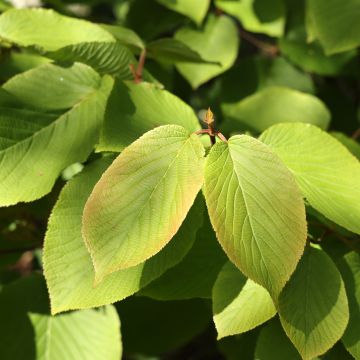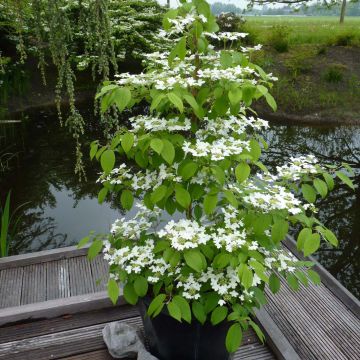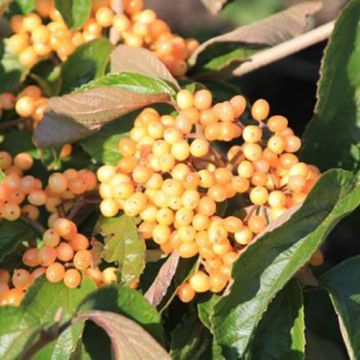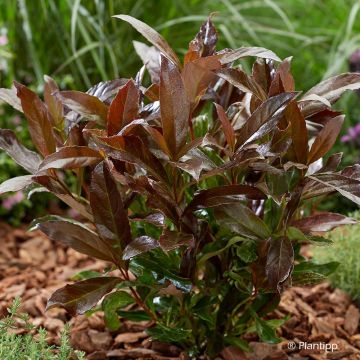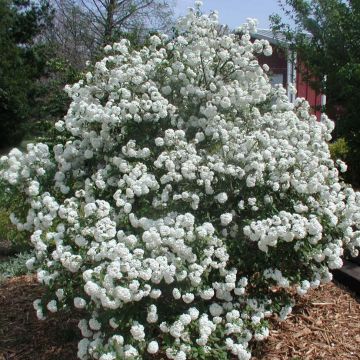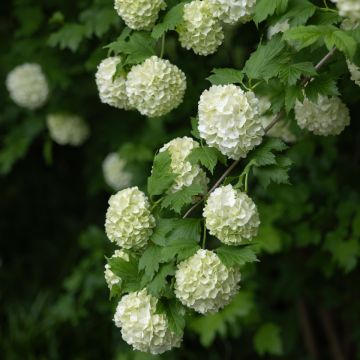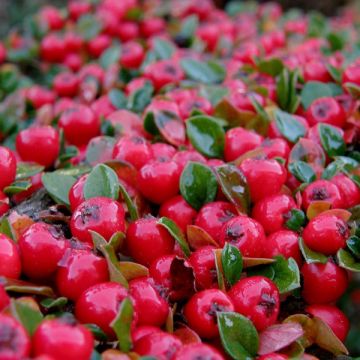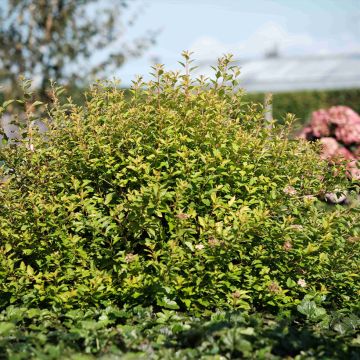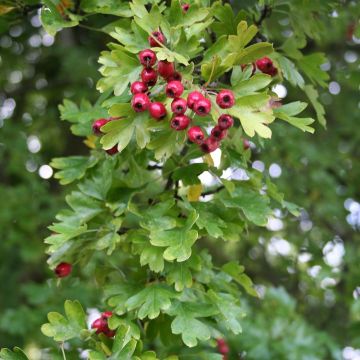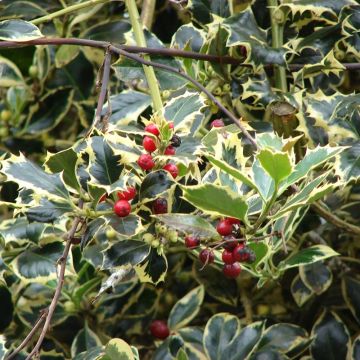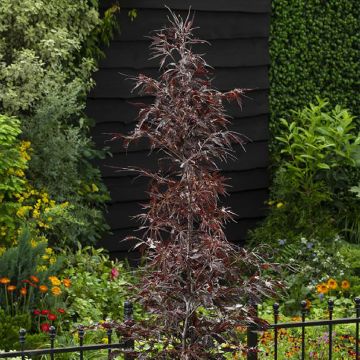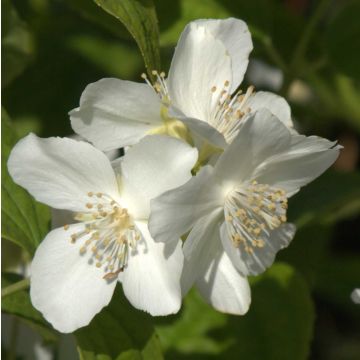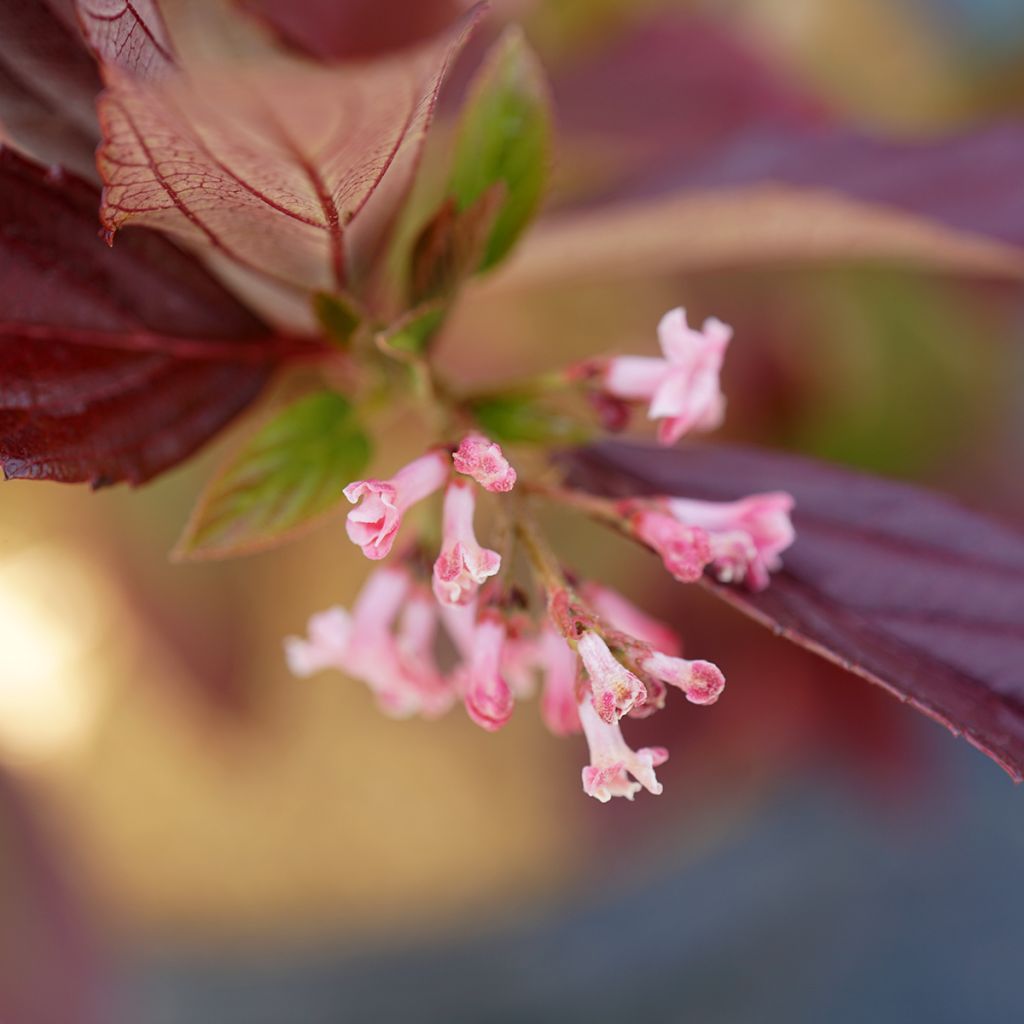

Viburnum Sweet Talker - Bodnantense Viburnum
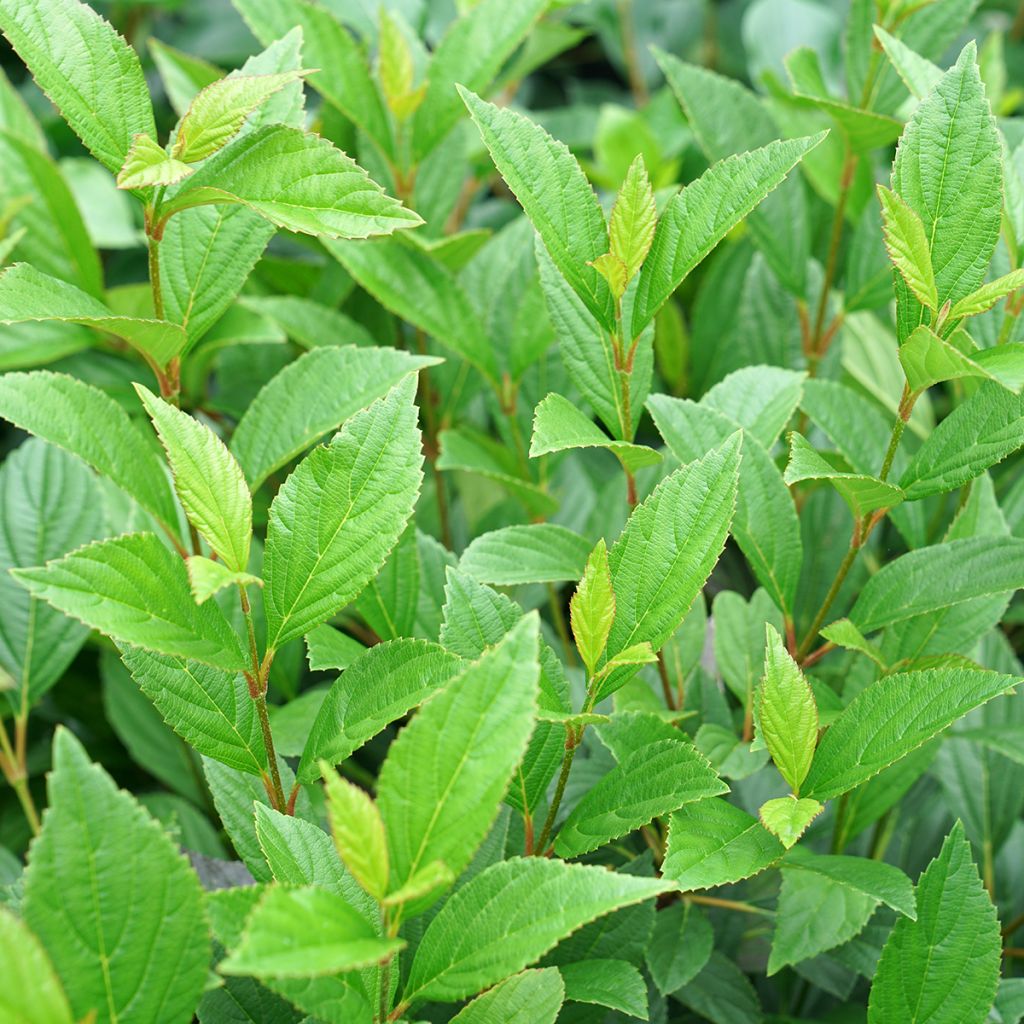

Viburnum Sweet Talker - Bodnantense Viburnum
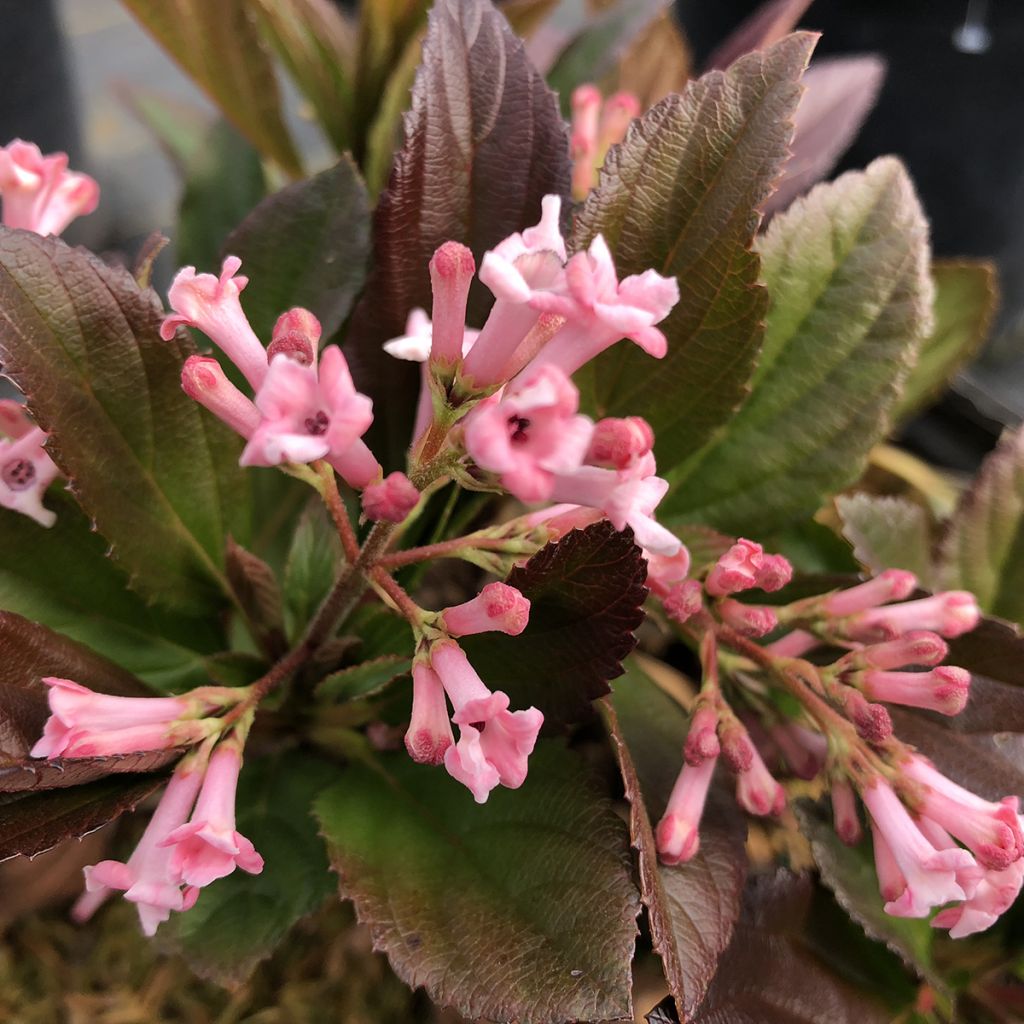

Viburnum Sweet Talker - Bodnantense Viburnum
Viburnum Sweet Talker - Bodnantense Viburnum
Viburnum bodnantense x suspensum Sweet Talker® Proven Winners®
Bodnant Viburnum, Bodnantense Viburnum
Why not try an alternative variety in stock?
View all →This plant carries a 24 months recovery warranty
More information
We guarantee the quality of our plants for a full growing cycle, and will replace at our expense any plant that fails to recover under normal climatic and planting conditions.
Oversize package: home delivery by special carrier from €6.90 per order..
Express home delivery from €8.90.
Does this plant fit my garden?
Set up your Plantfit profile →
Description
Viburnum Sweet Talker is a winter viburnum that combines many qualities. It is a bush that blooms pink from the end of winter, with a scent of honey and spices. Another advantage is its beautiful forest green foliage that turns burgundy in cool weather, in spring, but especially in autumn. Stunning and without specific requirements, this variety is easy to grow in most regions as long as it is planted well.
Viburnum Sweet Talker® Proven Winners® belongs to the Adoxaceae family. It is a hybrid resulting from the cross-breeding of two viburnum species, Viburnum x bodnantense and Viburnum suspensum. This cultivar was developed in the USA by breeder Dr. Tom Ranney, who seeks to combine the beauty of early-flowering viburnums with increased heat tolerance. The bush has an upright habit and can reach a height of 2.4 to 3 m and a width of 91 cm to 1.5 m. Its flowers appear from March to April, clustered in small trumpet-shaped pink flowers. They emit a scent of honey and spices. The foliage is semi-evergreen: it can partially remain on the branches in mild climates, or fall if the winter is cold. It is dense, tough foliage composed of finely toothed, fairly bright green leaves. When temperatures are cool, this foliage takes on spectacular shades of violet burgundy. This dense foliage brings interesting texture to the garden for much of the year.
This Sweet Talker® Winter Viburnum is a very resistant plant. This variety tolerates heat and salt well, which allows it to be adopted in warmer climates and coastal regions. Easy to live with, it can be planted in flower beds, informal or flowering hedges, or as a specimen plant, preferably not far from the house or a pathway to enjoy the scent and beauty of the flowers at the end of winter. To accompany it, place some Oriental hyacinths or Winter Aconite bulbs at its base. Next to it, you can plant a Garrya elliptica 'James Roof', a strawberry tree Arbutus unedo 'Rubra', or a witch hazel if your soil is not chalky. Cut the flowering branches to make beautiful bouquets that will perfume the house.
Viburnums are undemanding bushes that integrate well into informal hedges; by mixing different species or combining them with other flowering shrubs, you will create a charming garden that evolves throughout the year.
Plant habit
Flowering
Foliage
Botanical data
Viburnum
bodnantense x suspensum
Sweet Talker® Proven Winners®
Viburnaceae
Bodnant Viburnum, Bodnantense Viburnum
Cultivar or hybrid
Other Viburnum
Planting and care
Viburnum 'Sweet Talker' should be planted in autumn or early spring, outside of freezing periods. It can be grown in full sun or partial shade, sheltered from cold and drying winds that could damage its flowering. Place it in any type of deep soil, without excessive limestone and not too dry, enriched with compost. This easy-to-grow bush needs little maintenance. The bush is often attacked by aphids without much damage. After flowering, you can prune the bush if you want to densify its habit. Trim lightly and remove branches that compromise the plant's symmetry.
Planting period
Intended location
Care
This item has not been reviewed yet - be the first to leave a review about it.
Hedge shrubs
Haven't found what you were looking for?
Hardiness is the lowest winter temperature a plant can endure without suffering serious damage or even dying. However, hardiness is affected by location (a sheltered area, such as a patio), protection (winter cover) and soil type (hardiness is improved by well-drained soil).

Photo Sharing Terms & Conditions
In order to encourage gardeners to interact and share their experiences, Promesse de fleurs offers various media enabling content to be uploaded onto its Site - in particular via the ‘Photo sharing’ module.
The User agrees to refrain from:
- Posting any content that is illegal, prejudicial, insulting, racist, inciteful to hatred, revisionist, contrary to public decency, that infringes on privacy or on the privacy rights of third parties, in particular the publicity rights of persons and goods, intellectual property rights, or the right to privacy.
- Submitting content on behalf of a third party;
- Impersonate the identity of a third party and/or publish any personal information about a third party;
In general, the User undertakes to refrain from any unethical behaviour.
All Content (in particular text, comments, files, images, photos, videos, creative works, etc.), which may be subject to property or intellectual property rights, image or other private rights, shall remain the property of the User, subject to the limited rights granted by the terms of the licence granted by Promesse de fleurs as stated below. Users are at liberty to publish or not to publish such Content on the Site, notably via the ‘Photo Sharing’ facility, and accept that this Content shall be made public and freely accessible, notably on the Internet.
Users further acknowledge, undertake to have ,and guarantee that they hold all necessary rights and permissions to publish such material on the Site, in particular with regard to the legislation in force pertaining to any privacy, property, intellectual property, image, or contractual rights, or rights of any other nature. By publishing such Content on the Site, Users acknowledge accepting full liability as publishers of the Content within the meaning of the law, and grant Promesse de fleurs, free of charge, an inclusive, worldwide licence for the said Content for the entire duration of its publication, including all reproduction, representation, up/downloading, displaying, performing, transmission, and storage rights.
Users also grant permission for their name to be linked to the Content and accept that this link may not always be made available.
By engaging in posting material, Users consent to their Content becoming automatically accessible on the Internet, in particular on other sites and/or blogs and/or web pages of the Promesse de fleurs site, including in particular social pages and the Promesse de fleurs catalogue.
Users may secure the removal of entrusted content free of charge by issuing a simple request via our contact form.

































